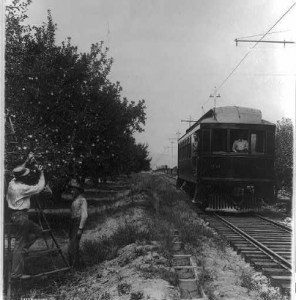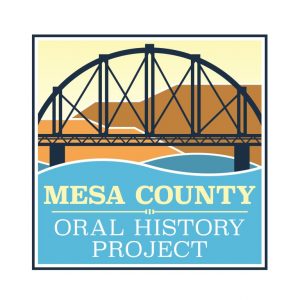
The 1930’s Interurban Streetcar from Grand Junction to Fruita was undoubtedly cheaper than today’s Uber ride. Image source: Library of Congress
One evening while eating at a steakhouse with my grandfather, I noticed him gasp at the price of sirloin and mutter, “Why, in my day, you could buy a whole cow for $5.” I used to just think he was just being dramatic, but his comical and curmudgeonly attitude wasn’t farfetched: prices have raised significantly in the last one hundred years.
In the early 1900s, the Grand Valley region became a new home for pioneers, cowboys, farmers, and people from all over the world. During interviews with the Mesa County Oral History Project, our early settlers have shared some interesting details of how much money they were spending on their livelihoods, homes, and hobbies:
- Early 1900s horse saddle: $75
- 2019 horse saddle: $500+
- Early 1900s prize money for riding a bull: $5 (Morgan Goss interview)
- 2019 prize money for riding a bull: $1,000,000+ for the World Champion Bull Rider
- 1919 fruit orchard labor hourly pay: $.35
- 2019 fruit orchard labor hourly pay: $11 (United States average)
- Early 1900s cost for a month’s rent in a downtown Grand Junction apartment: $5
- 2019 median cost for a month’s rent in a downtown Grand Junction apartment: $1,250
- 1925 admission into the Ringling Bros. traveling circus: $.50
- 2019 admission into the Ringling Bros. traveling circus: $50
- 1940 brand new Chevrolet pickup: $670 (Carl Gesberg interview)
- 2019 brand new Chevrolet pickup: $37,000+
- 1926 cost for one acre of undeveloped land in Orchard Mesa – $90 (Virgil Francis Hickman interview)
Think of how quickly Grand Valley real estate would go today at $90 per acre.
For more fun facts about our great county visit the Mesa County Oral History Project website.

